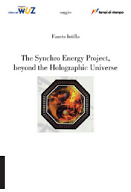ATLAS Live, a new browser showing the 1000 most recent events for each stream, is now online. It’s perfect for collaborators all over the world who want to check up on what’s going on underground at any time of day or night. Whether you be in your pyjamas rubbing your eyes before your 6 a.m. run in Ferney, or dressed to impress on your way to a concert hall in Paris, your window onto the detector is always open for you to sneak a peek.In fact, the ALTAS Live in question – developed by former ATLAS member Zdenek Maxa – is one of three ventures going by the same name. Ultimately, the information from this page will feed into another ATLAS Live, being developed by Manuela Cirilli and Kathy Pommes, which will also feature items like message boards and updates on ATLAS run status. The event display browser includes all the different Trigger streams and displays 20 Atlantis images per page, which users can scroll back and forth through. If they spot something of interest, they can download the image, or download the original JiveXML and corresponding VP1 input file for each selected event. They can also directly launch Atlantis on any given event, and then further interrogate it by zooming in, picking on data, implementing cuts and adjusting the view windows, to best highlight what they are interested in. “We focused a little bit more on the Atlantis side [rather than VP1] because Atlantis is a java application, so it can use this web start feature and doesn’t need to know what machine you’re running on,” explains Online Event Display Coordinator, Sebastian Böser. “This is basically the side of it that we have for the physicists. So they browse through these events and they say, ‘Wait a second, this looks really interesting, I want to go and see this in another projection.’” The display works on a rolling system, so as each new image comes in, the 1000th image drops off the end. Events make it on screen with around a ten second lag time. Right now, while there are only cosmics to be seen, 1000 events take place over a timescale of a few hours. Once there are collisions, 1000 events will be notched up in around ten minutes. At the bottom of the ATLAS Live page, there is also a link to a ‘latest event’ page. “We were thinking of all those people who might want to put up monitors in their universities showing the latest from the detector,” explains Sebastian. After selecting a stream, the image refreshes itself every five seconds, and all the user needs to do is point their web browser at that page and let it roll. The system has been up for six weeks or so already, and Sebastian urges everyone to check it out now and get familiar with it ahead of beam. In practical terms, this will allow the online data preparation group to monitor the load on the server, and iron out any problems that may arise. Combined cosmic running has already begun – go and take a look at what your detector can see!
Ceri Perkins




















